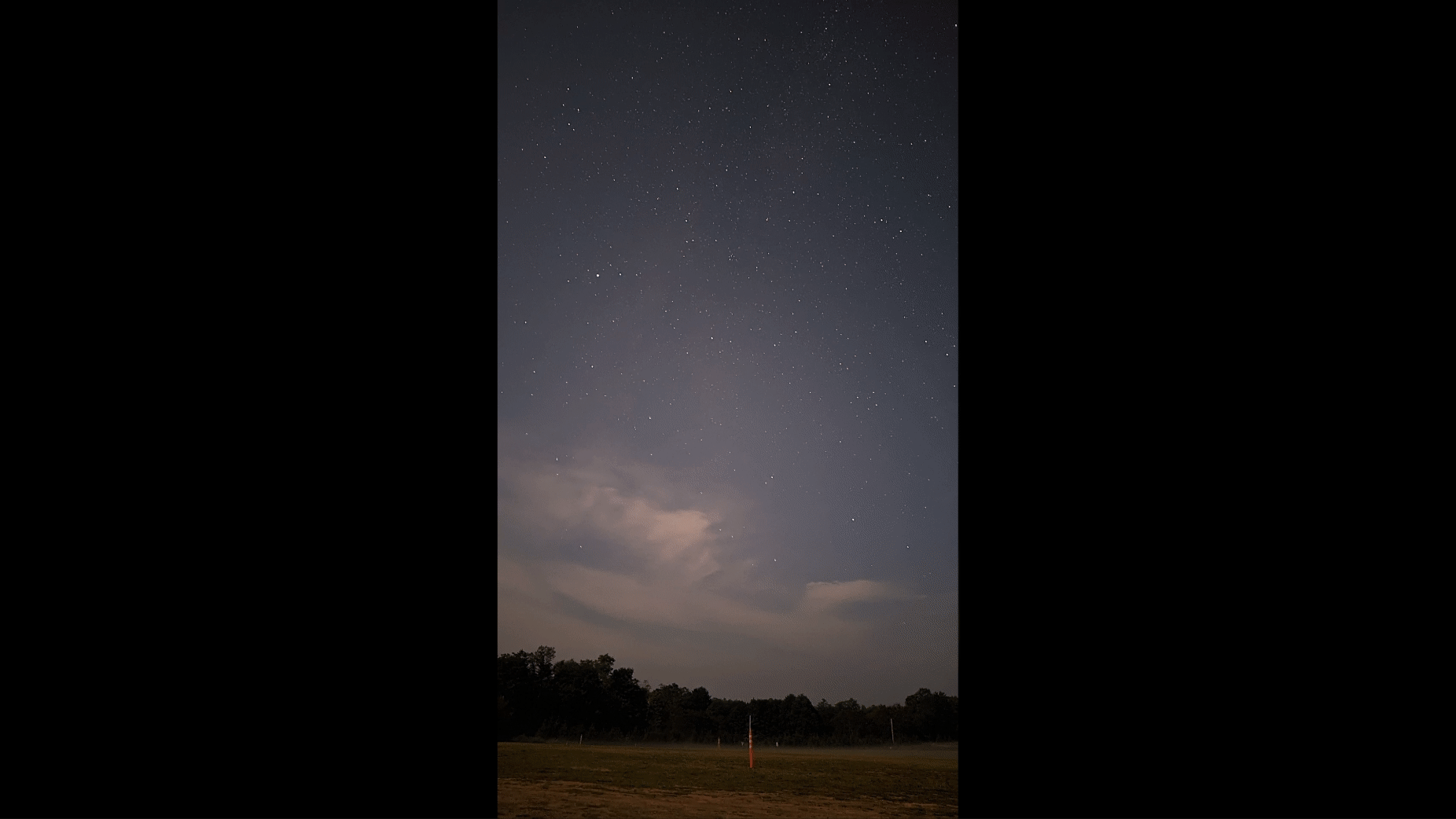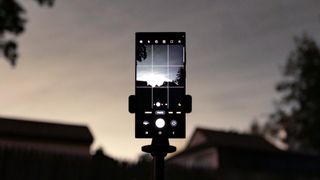Review sản phẩm
Cùng xem kết quả đối đầu chụp ảnh thiên văn đỉnh cao của những chiếc điện thoại cao cấp hàng đầu.
Giới thiệu We took some of the best flagship phones for an astrophotography face-off — here are the results
Chúng tôi đã chọn một số điện thoại cao cấp nhất để tham gia cuộc so tài chụp ảnh thiên văn học – dưới đây là kết quả
Chúng tôi đã thực hiện cuộc so tài về chụp ảnh thiên văn với một số điện thoại thông minh hàng đầu – đây là kết quả của chúng tôi #ĐánhgiásảnphẩmvàmuaNgayTaiQueenMobile
Queen Mobile mang đến cho bạn những sản phẩm điện thoại di động hàng đầu thị trường hiện nay, đáp ứng mọi nhu cầu của bạn. Bạn không chỉ có được chiếc điện thoại hoàn hảo mà còn có cơ hội suy nghĩ về việc sử dụng nó cho mục đích chụp ảnh thiên văn.
Chúng tôi quyết định thực hiện một cuộc so tài giữa các điện thoại thông minh hàng đầu để xem chúng có thể chụp ảnh thiên văn tốt như thế nào. Sau một thời gian thử nghiệm và đánh giá kỹ lưỡng, chúng tôi đã có được những kết quả thú vị.
Trong số những đối thủ xuất sắc nhất của chúng tôi, có: Samsung Galaxy S21 Ultra, iPhone 12 Pro Max và Google Pixel 5. Các mẫu điện thoại này được cho là có khả năng chụp ảnh thiên văn tốt nhất hiện nay.
Các bức ảnh thiên văn chụp bằng các điện thoại này đều cho thấy sự mạnh mẽ và ấn tượng. Với khả năng chụp ảnh ấn tượng, độ tương phản tốt và khả năng lấy nét nhanh, chúng đã chinh phục chúng tôi ngay từ lần đầu tiên thử nghiệm.
Tuy nhiên, mỗi mẫu điện thoại cũng có nhược điểm của riêng nó. Samsung Galaxy S21 Ultra có camera zoom ảnh cực mạnh, trong khi iPhone 12 Pro Max có khả năng xử lý màu sắc tốt hơn. Google Pixel 5, bất ngờ, cho thấy khả năng chụp ảnh thiên văn ấn tượng với công nghệ Night Sight của họ.
Với kết quả đó, không có điện thoại nào xuất sắc hơn cả. Mỗi mẫu điện thoại có ưu điểm riêng và sẽ phù hợp với nhu cầu và sở thích cá nhân của bạn.
Queen Mobile chính là địa điểm tin cậy để bạn mua các mẫu điện thoại thông minh hàng đầu. Với nhiều sự lựa chọn và chất lượng đảm bảo, bạn không cần phải lo lắng về việc tìm kiếm sản phẩm phù hợp. Hãy đến và trải nghiệm ngay!
#Đánhgiánhàcungcấp
#QueenMobile
#Sảnphẩmhàngđầu
#FlagshipPhone
#Chụpảnhthiênvăn
#Khámphá
#Thửnghiệm
#Kếtquả
Mua ngay sản phẩm tại Việt Nam:
QUEEN MOBILE chuyên cung cấp điện thoại Iphone, máy tính bảng Ipad, đồng hồ Smartwatch và các phụ kiện APPLE và các giải pháp điện tử và nhà thông minh. Queen Mobile rất hân hạnh được phục vụ quý khách….
_____________________________________________________
Mua #Điện_thoại #iphone #ipad #macbook #samsung #xiaomi #poco #oppo #snapdragon giá tốt, hãy ghé [𝑸𝑼𝑬𝑬𝑵 𝑴𝑶𝑩𝑰𝑳𝑬]
✿ 149 Hòa Bình, phường Hiệp Tân, quận Tân Phú, TP HCM
✿ 402B, Hai Bà Trưng, P Tân Định, Q 1, HCM
✿ 287 đường 3/2 P 10, Q 10, HCM
Hotline (miễn phí) 19003190
Thu cũ đổi mới
Rẻ hơn hoàn tiền
Góp 0%
Thời gian làm việc: 9h – 21h.
KẾT LUẬN
Trong một cuộc so tài về chụp hình thiên văn bằng các điện thoại thông minh hạng sang, chúng tôi đã chọn những chiếc điện thoại tốt nhất để đối đầu và dưới đây là kết quả.
All smartphones can take good looking photos when it’s sunny and bright out, but very few are equipped to tackle the night sky. Astrophotography has increasingly become more than just a novel hobby, moving closer to the mainstream where you no longer need the expertise and patience to see the stars in photos.
One reason why? Many of the best camera phones around leverage their respective night modes to draw out the twinkling lights above us from the darkness of space.
We took a few of today’s top flagship smartphones — the iPhone 14 Pro, Samsung Galaxy S23 Ultra, and the Google Pixel Fold — on a road trip to Cherry Springs State Park in Pennsylvania to really see how they stack up. The park is ideal for astrophotography because you get an undisturbed view of the night sky without all the light pollution that cities normally produce.
These phones don’t come cheap, exceeding past the $1,000 range in most cases. However, when you want the absolute best results, you’ll need to pony up to get them. If that’s not enough, we also brought along the Sony A7S III, a mirrorless camera renowned for being a low-light beast.
We’ll reveal more about each device below in this astrophotography face-off, like how easy they’re to use, their outcomes, and samples to give you the best picture of what’s possible. In order to achieve the best results, you’ll want to keep your camera as still as possible, which is why we recommend using a tripod to prevent any minor shakes from ruining your shots.
Sony A7S III: The best, for obvious reasons
Image 1 of 4
All right, we’ll flat out say that the Sony A7S III was the best at handling astrophotography — but that shouldn’t be a shock given it’s a mirrorless camera with a humongous sensor to draw in more light. On top of that, we paired the $3,500 camera with Sony’s 16-35mm f2.8 lens that costs about $2,100.
Not surprisingly, this pairing delivers sharp results and detail. Due to its larger sensor, we didn’t have to boost the ISO all that much in our astrophotography battle. In most cases, the ISO was kept between 640 and 800 — with an exposure time of no longer than 30 seconds.
Most of the bright stars in the night sky were easily recognizable, but the camera sensor’s superior sensitivity allows the Sony A7S III to capture the fainter stars. The amount of detail the A75 captures is astounding — so much so that it was also able to expose some of the faint, swirling gas around some of the star clusters.
Apple iPhone 14 Pro: Good, but not great
Image 1 of 4
What’s most surprising here in this astrophotography comparison is that the Apple iPhone 14 Pro fared the worst. It’s hard for us to wrap our heads around that because we know the iPhone 14 Pro is a superb all-around camera phone that also does nicely under dim lighting conditions. To be fair, you can still make out a fair amount of stars, but it’s nowhere close to capturing the same amount we found with the Sony A7S III.
The overall shot by the iPhone 14 Pro just looks softer by comparison, while other background fixtures such as the trees lose a lot of detail and color. Seeing that the iPhone 14 Pro doesn’t provide us with any parameter controls, it’s no surprise that its astrophotography shots look the softest out of the bunch — and it’s also not shocking that its ISO setting ranged from 1600 to 8000. In most instances, the iPhone’s night mode gave us an exposure time of 10 seconds at the most.
Don’t get us wrong, the iPhone 14 Pro is still a decent astrophotography camera, but its lack of manual controls means we’re at the mercy of the Apple’s control and image processing when it comes to shooting the night sky.
Google Pixel Fold: The only device here with time lapse astrophotography
Image 1 of 2
While others will argue that the Google Pixel 7 Pro is the more ideal candidate for an astrophotography face-off, the reason why the Pixel Fold is better here relates to how it can prop itself. Tehcnically, you don’t need to carry around a tripod and smartphone grip in order to keep this foldable phone steady.
Interestingly enough, it was the Pixel 3 that introduced us all to the concept of astrophotography on mobile with its Night Sight mode. That’s been enhanced with each iteration of Google’s phones, and the Pixel Fold delivers top-notch results. Selecting the longest exposure time with Night Sight, the Fold produces excellent results filled with plenty of stars and an overall image that’s sharp.

Now, astrophotography isn’t just isolated to still shots with the Pixel Fold, seeing that there’s an option to also capture time-lapse astrophotography as well. It’s really simple to do as well, which makes the Pixel Fold even more attractive.
Samsung Galaxy S23 Ultra: The best camera phone around
Image 1 of 4
And lastly, there’s the Samsung Galaxy S23 Ultra. There’s a good reason why it lands the top spot in our best camera phone list, but it’s satisfying to know that it’s superb for astrophotography as well. Samsung’s mobile device is the only phone in our testing that came close to matching the results of the Sony A7S III.
While there’s a dedicated night mode on the Galaxy S23 Ultra, we actually got better results switching to the camera’s pro mode and manually setting the shutter speed to 30 seconds. The fainter stars in the night sky that appeared indistinct with the iPhone 14 Pro were easily visible with the Galaxy S23 Ultra. At the same time, the S23 Ultra also manages to draw out other details like the gas around some star clusters.
It’s also worth pointing out that the S23 Ultra is the only phone in the bunch with dedicated manual controls, which is something that helps enthusiasts and pros to dial in the exact settings they want to capture a scene. Finally, it offers more utility than most phones because of its quadruple camera system.
Outlook: You don’t need a pricey setup to capture stars

Honestly, it’s almost unbelievable how today’s flagship smartphones bridge the gap with astrophotography. All of the phones we used in this astrophotography face-off proves to us that you don’t need an expensive camera and lens to see all the hidden wonders in the night sky. The Galaxy S23 Ultra, while expensive, costs about a fifth of what we spent on the Sony A7S III and its lens.
Best of all, the whole process is made simple and straightforward — with the only requirement being that your phone needs to remain as still as possible while shooting. There’s no fiddling around the settings or going through different menus in order to pull off amazing astrophotography shots.
More from Tom’s Guide
Khám phá thêm từ Phụ Kiện Đỉnh
Đăng ký để nhận các bài đăng mới nhất được gửi đến email của bạn.






